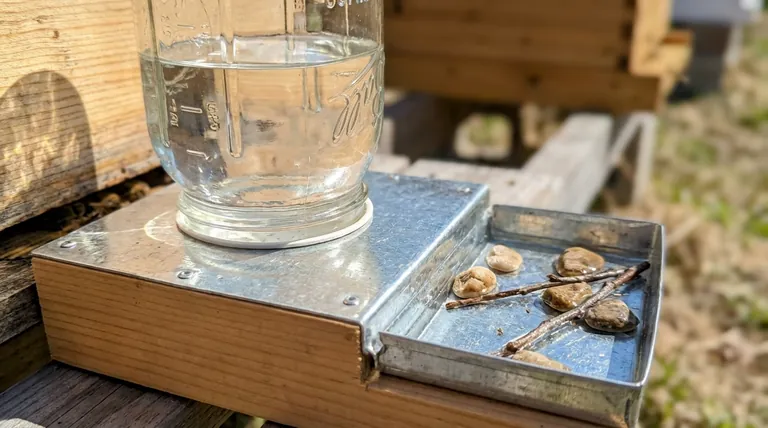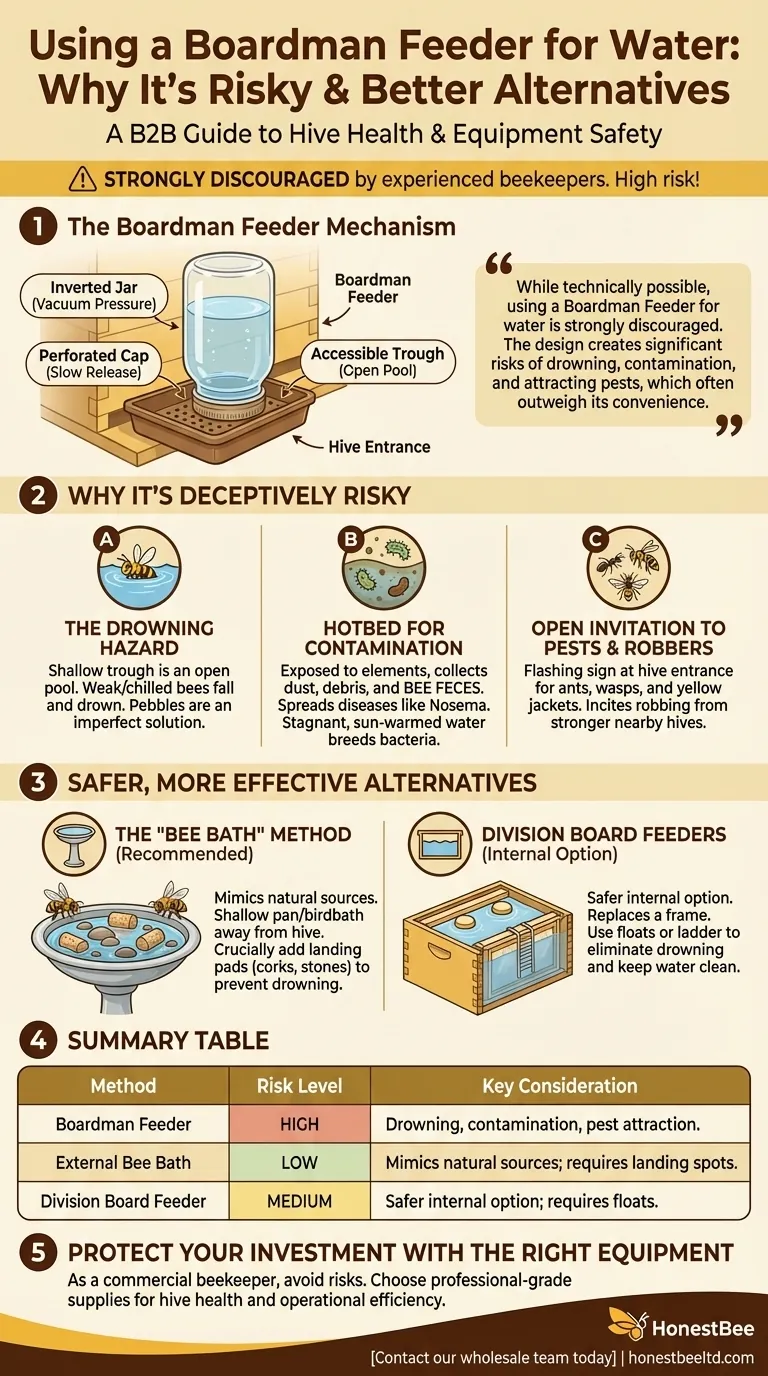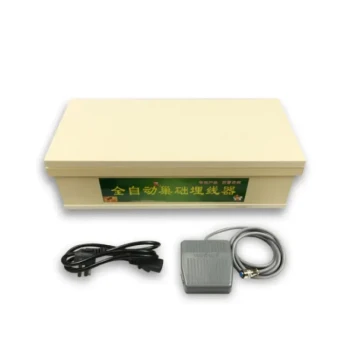At its most basic level, using a Boardman Feeder for water is straightforward. You simply fill a standard canning jar with clean water, screw on the perforated cap, and place the inverted jar into the wooden or plastic base at the hive's entrance. The vacuum pressure holds most of the water in the jar while allowing a small amount to fill the accessible trough.
While technically possible, using a Boardman Feeder for water is strongly discouraged by experienced beekeepers. The design creates significant risks of drowning, contamination, and attracting pests, which often outweigh its convenience.

Why This Method Is Deceptively Risky
The appeal of the Boardman Feeder is its simplicity and visibility. It sits outside the hive, making it easy to see the water level and refill the jar without disturbing the colony. However, understanding the functional drawbacks is critical for hive health.
The Drowning Hazard
A Boardman Feeder's trough, though shallow, is an open pool of water. Foraging bees, especially if weak or chilled, can easily fall in and drown. While some beekeepers add pebbles or twigs to the trough, this is an imperfect solution that makes cleaning more difficult.
A Hotbed for Contamination
The water in the trough is exposed to the elements. It quickly collects dust, debris, and, most importantly, bee feces. This turns the water station into a potential vector for spreading diseases like Nosema throughout the colony. The stagnant, sun-warmed water is an ideal environment for harmful bacteria to multiply.
An Open Invitation to Pests and Robbers
Placing a resource—whether it's sugar syrup or water—directly at the hive entrance is like putting up a flashing sign for pests. Ants, wasps, and yellow jackets will be drawn to the reliable water source. More dangerously, it can incite robbing behavior from stronger, nearby hives, leading to a battle that can decimate your colony.
Understanding the Trade-offs: Convenience vs. Hive Safety
The core issue with using a Boardman Feeder for water is that it prioritizes beekeeper convenience over the bees' safety and natural behavior.
Why External Water Sources are Superior
Bees naturally seek water from sources like pond edges, dewy leaves, or even damp soil. These sources provide a large surface area with plenty of safe places to land. A dedicated external water source mimics this far better than an entrance feeder.
The Problem of Capacity
On a hot day, a strong colony needs a significant amount of water for evaporative cooling to regulate the hive's temperature. A single quart or pint jar in a Boardman Feeder is often insufficient and will run dry quickly, leaving the bees without the resources they need during a critical time.
Safer, More Effective Alternatives
Fortunately, providing water safely is simple and inexpensive. The best methods create a communal, low-risk water source away from the hive entrance.
The "Bee Bath" Method
This is the most common and recommended approach. Fill a birdbath, shallow pan, or bucket with water. Crucially, you must add materials to create landing pads for the bees. Wine corks, stones, pebbles, marbles, or floating wood chips all work perfectly. This prevents drowning and gives many bees access at once.
Using Division Board Feeders
If you must feed water inside the hive, a division board (or frame) feeder is a much safer option. These feeders sit inside the hive body in place of a frame. By adding floats or creating a "ladder" with hardware cloth, you can largely eliminate the risk of drowning while keeping the water clean and protected from outside pests.
Making the Right Choice for Your Goal
Your goal is to provide a reliable, clean, and safe water source that supports hive health, not one that introduces new dangers.
- If your primary focus is bee safety and health: Set up an external "bee bath" with plenty of landing spots a short distance away from your hives.
- If your apiary is in a hot, dry climate: Consider a larger-capacity water source, like a 5-gallon bucket with a floating platform or a dripping faucet onto a sloped board.
- If you own a Boardman Feeder: Reserve it for emergency feeding of 1:1 sugar syrup for a strong colony, but remain vigilant for signs of robbing it may cause.
Ultimately, providing water in a way that mimics nature is the most effective strategy for supporting a thriving, healthy colony.
Summary Table:
| Method | Risk Level | Key Consideration |
|---|---|---|
| Boardman Feeder | High | High risk of drowning, contamination, and attracting pests. |
| External Bee Bath | Low | Mimics natural sources; use stones/corks for safe landing. |
| Division Board Feeder | Medium | Safer internal option; requires floats to prevent drowning. |
Protect Your Investment with the Right Equipment
As a commercial beekeeper or distributor, the health of your colonies is your livelihood. The risks of using improper equipment like a Boardman Feeder for water can lead to significant losses. At HONESTBEE, we supply professional-grade beekeeping supplies and equipment designed for the rigorous demands of commercial apiaries and distributors. Our products prioritize bee safety and operational efficiency, helping you maintain strong, productive hives.
Ensure your operation uses the best tools for the job. Contact our wholesale team today to discuss your equipment needs and secure reliable, high-quality supplies for your apiary.
Visual Guide

Related Products
- Boardman Entrance Bee Feeder Durable Galvanized Steel and Wood Construction for Beekeeping
- Classic Boardman Entrance Bee Feeder Hive Front Feeding Solution
- HONESTBEE Entrance Bee Feeder Professional Hive Nutrition Solution for Beekeeping
- Professional Hive Front Entrance Bee Feeder
- HONESTBEE Professional Entrance Bee Feeder Hive Nutrition Solution
People Also Ask
- What types of bee feeders are available for beginners? Start with the Simple Entrance Feeder
- How does an entrance feeder work? A Guide to Its Simple Mechanics and Risks
- How do you make an entrance feeder for bees? A Guide to Safe & Effective Hive Feeding
- What are the different types of feeders available for beehives? A Guide to Entrance, Hive-Top, and Frame Feeders
- How does a bee entrance feeder work? A Simple Guide to Convenient Hive Feeding



















